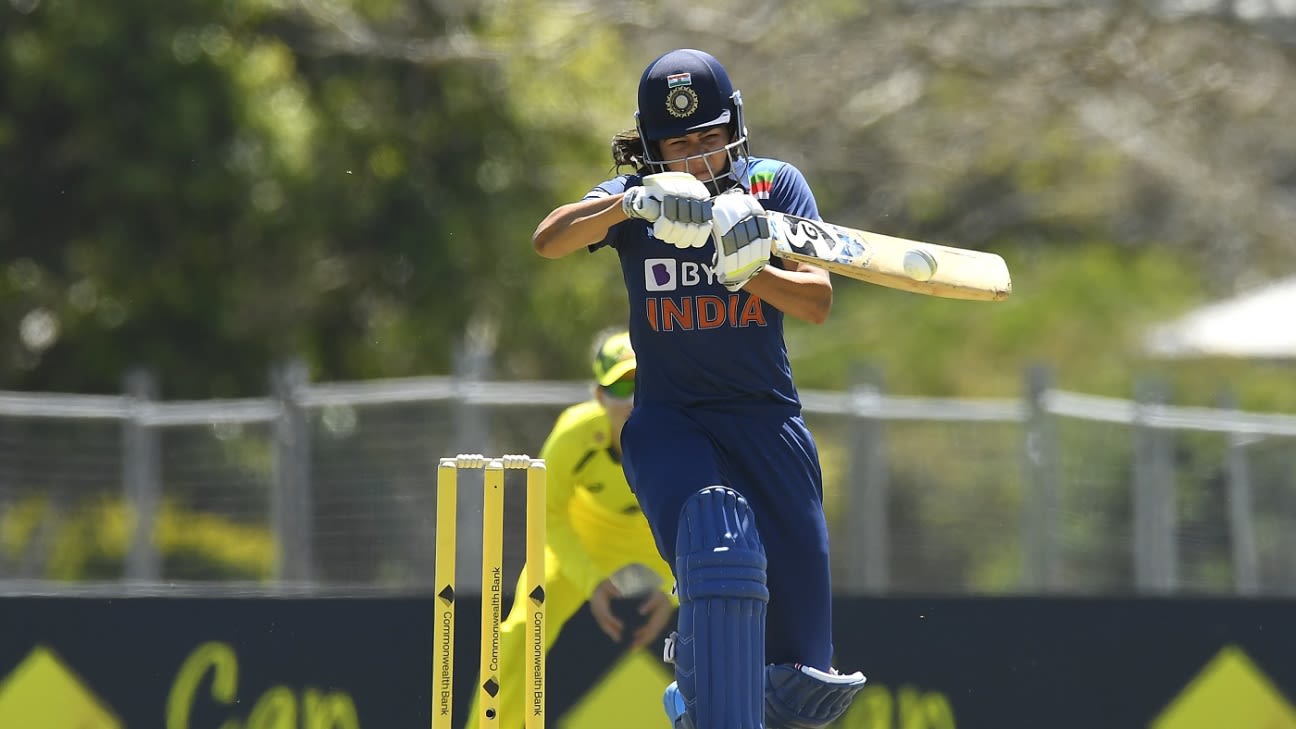Yastika’s promise, Perry’s problems: what we learnt from the Australia-India ODIs
Australia and India, semi-finalists and finalists at the 2017 ODI World Cup, have played nine and 11 matches in the format respectively since the start of the pandemic. The three-match ODI leg of their ongoing multi-format series offered a peek into the strengths and flaws, and potential combinations for them to field at next year’s World Cup. ESPNcricinfo dissects some of them.
Midway into their successful chase in the second ODI, Australia captain Meg Lanning told the host broadcaster that her batters were aiming for nine runs per over at the death (overs 40.1 to 50). By Australia’s own standards, not least with four wickets down, Lanning’s assertion sounded ambitious, for they have scored at 7.24 in the last 10 overs since the end of the 2017 World Cup.
Playing only her third innings for India, left-hander Yastika Bhatia had brought up her maiden international fifty only two balls prior when she shuffled outside the off stump, lined herself up for the widish back-of-length Annabel Sutherland delivery and whip-pulled it for a cracking four to deep square. That one shot alone crystallised the confidence, composure, and technical aptitude the 23-year old has showcased on the Australia tour so far, making 64, 3, and 34 in the ODIs and a 42-ball 41 in the one-off practice game.
In the absence of Megan Schutt and Tayla Vlaeminck, Ellyse Perry took the new ball for Australia. The ODIs were Perry’s first new-ball stint since she limped out of the 2020 T20 World Cup with a hamstring injury. But the control and efficacy that’s underpinned her bowling through the best part of her career, were far from view as she finished wicketless.
The 19-year-old Campbell, who debuted in the third ODI, impressed with consistent pace north of 118kph and the use of her tall frame, and Darlington, too, offered decent support. The return of Sutherland, who picked 3 for 30 in the third ODI, was a reminder of the penetration she adds to the attack when not grounded by injury.
It’s hard to predict which Indian fielding unit might show up on a given day. A feature of their 11 matches across three ODI series this year, their volatility has ranged from Harleen Deol’s boundary-riding-gravity-defying peak to sitters shelled by the rookies and experienced players alike in a collective act of infectious frenzy.
Though far more alert, athletic, and well-oiled as a fielding group, Australia, for their part, made costly errors, too, a sticking point most tellingly in their record-snapping defeat in the third ODI. Carey, Sutherland, Molineux found themselves among those to err under pressure, and two games earlier, Lanning, too, had shelled a straightforward catch, at slip.
For an ODI side that rode a world-record unbeaten streak spanning nearly four years, some room for improvement did emerge after all.
With additional statistical inputs by Sampath Bandarupalli
Annesha Ghosh is a sub-editor at ESPNcricinfo. @ghosh_annesha
For all the latest Sports News Click Here

